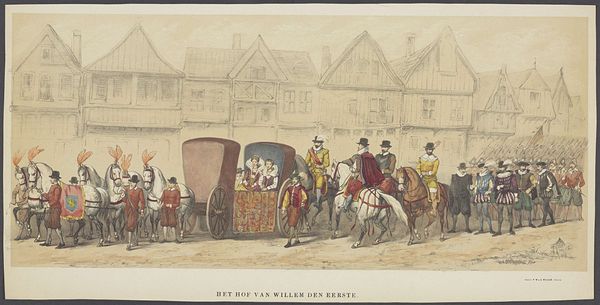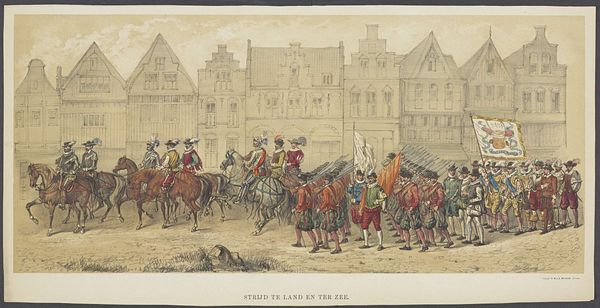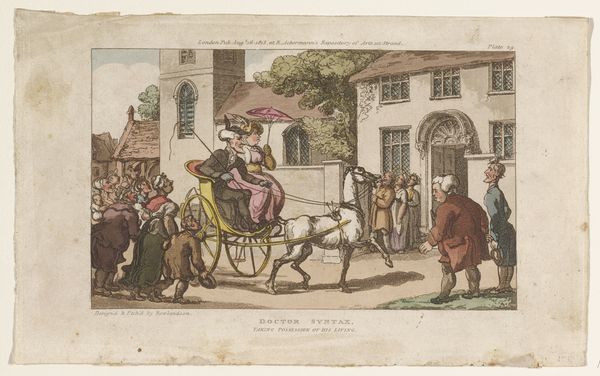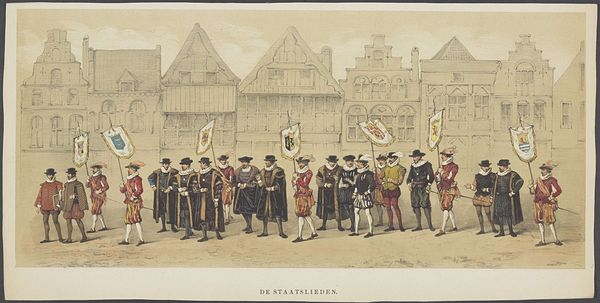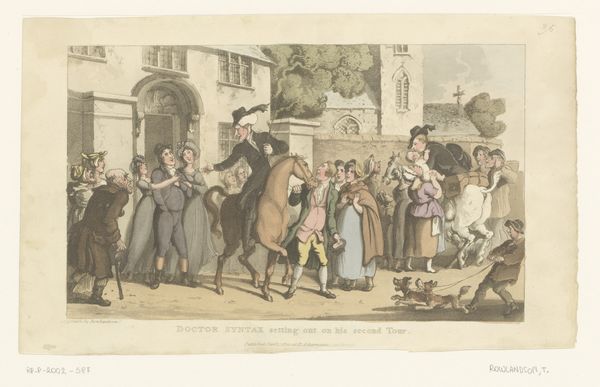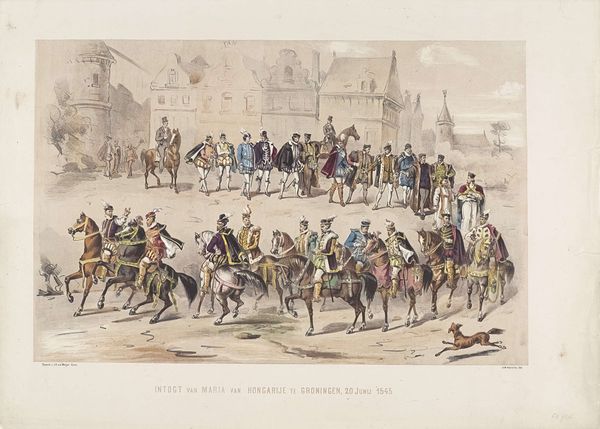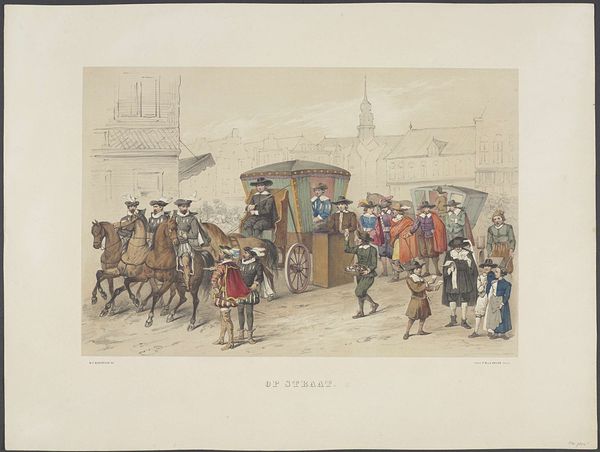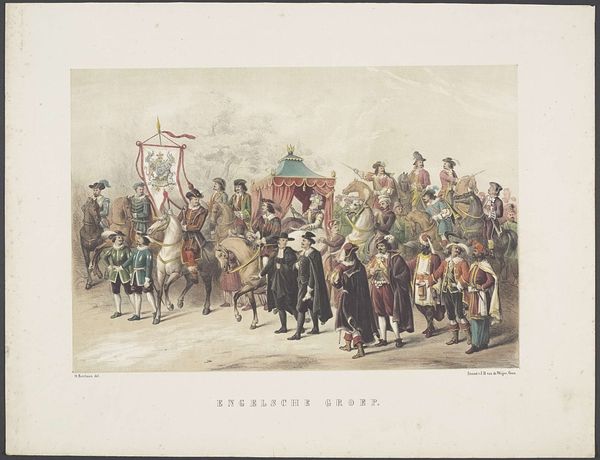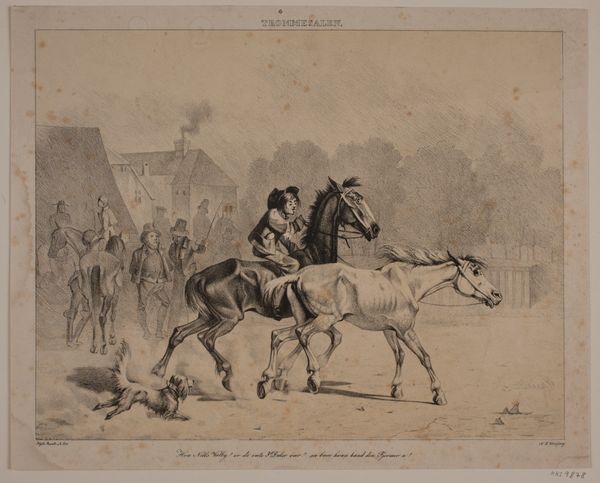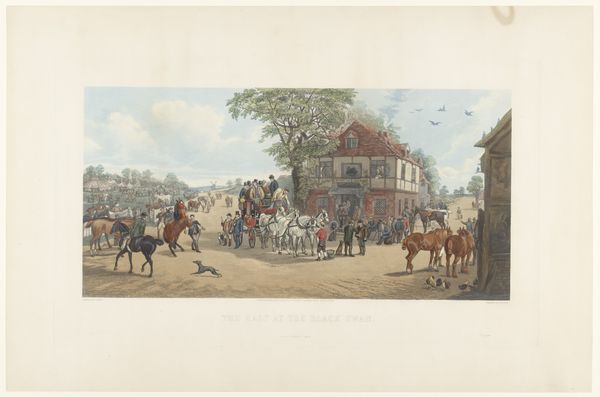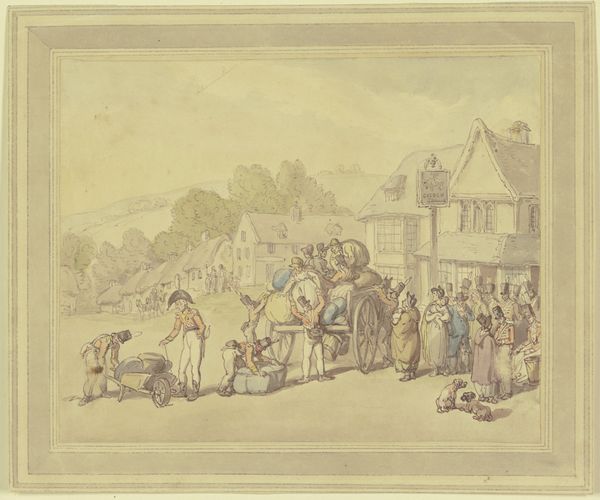
Dimensions: height 308 mm, width 625 mm
Copyright: Rijks Museum: Open Domain
This print, Utrechtse Maskerade, depicting the court of William the First, was made in 1856 by an anonymous artist. The composition shows a procession of noblemen on horseback, with soldiers marching in formation, all set against the backdrop of a Dutch town. Note the horses in the image. Since antiquity, the horse has been a symbol of power, virility, and nobility. Equestrian portraits, like the ones we see here, have long been used to assert authority. Think of the Roman emperors depicted on horseback, their statues erected as symbols of their dominion. The repetition of this symbol, recurring throughout history, reveals our collective fascination with power and control. The horse, a magnificent creature, becomes a vessel through which rulers project their authority, tapping into a deep-seated psychological desire for leadership. The echo of this motif across centuries reminds us that history is not linear, but cyclical, constantly revisiting and reimagining its symbols.
Comments
No comments
Be the first to comment and join the conversation on the ultimate creative platform.
